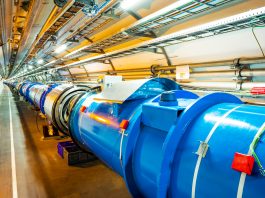A new project funded by the European Commission will develop energy efficient superconducting magnets that can be used to control charged particles, like electrons and protons.
The European Regional Structural Fund Programme for Småland and Islands and Region Kronoberg have contributed to a new collaboration project with Uppsala University, Linnaeus University, and a cluster of technology companies in the province of Småland. The project, worth €1.8m, aims to develop energy efficient superconducting magnets to create a competitive global market.
It aims to further the technological transition from ’warm’ normal conducting magnets to ‘cold’ superconducting magnets. Normal conducting warm magnets use water-cooled or air-cooled cables, whereas superconducting cold magnets use a superconducting effect, which is created using liquid helium. These superconducting magnets enable much higher current density than normal conducting magnets. This allows them to be much smaller while achieving a higher magnetic field with a reduction in total energy consumption.
Plans to manufacture a prototype for CERN
The project participants believe that these new magnets will become increasingly important tools within science, medicine, and industry. The first step toward this goal is to manufacture a prototype for CERN using methods and technologies that are more environmentally friendly than those used in current manufacturing.
The project will use new manufacturing technologies to produce a new type of magnetic design (canted cosine-theta design) that can be used to control charged particles. By adding some technology and business model skills development, the participating companies in Småland have the necessary basic expertise to be able to learn to manufacture these magnets.
Roger Ruber, researcher at the Department of Physics and Astronomy and in charge of technology in the project, said: “CERN plans to use these superconducting magnets to upgrade their large accelerator. Other large research facilities are interested in these magnets. In the future, we can also use them for such applications as cancer therapies.”









